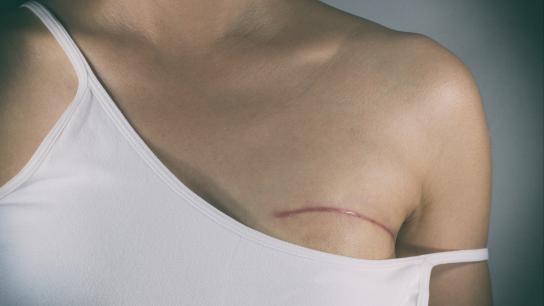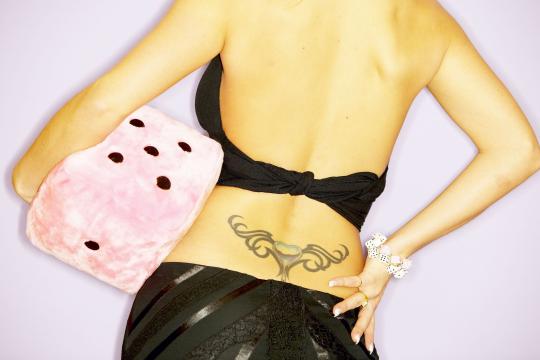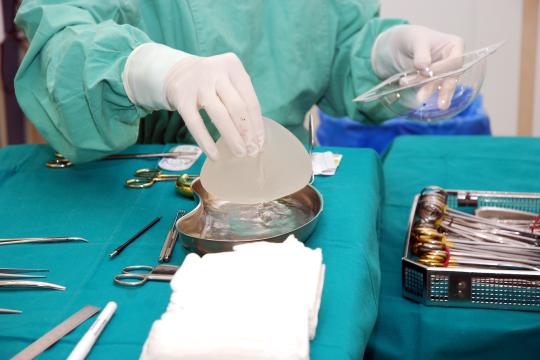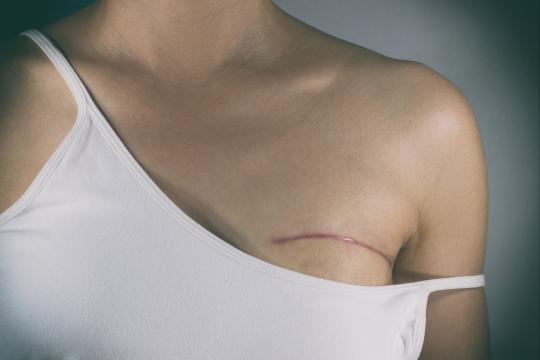
If you’ve lost weight, or just gave birth to your last child and you are ready to get that tummy tuck and/or a breast lift or augmentation, you’re likely not focusing too much on the location of said surgery’s incision and subsequent scar. And yet it should be a main concern, and one of the things you absolutely research when choosing a physician to perform your procedure, as the scar is a by-product of the procedure itself. In fact, there are many things that your plastic surgeon will take into consideration when making an incision to minimize or even hide the inevitable scarring, and knowing that your surgeon has expertise in this area is certainly a factor when it comes to who you should choose to perform your surgery. Obviously, the less scarring, the better!
Personally, had I known what an awful scar my C-section was going to leave me with I might have consulted with my OBGYN regarding the incision prior to my labor being induced. Clearly I had to have the surgery, as my son was NOT coming out any other way, (trust me, we tried) but it would have been nice to have options and to be prepared for the incision and the ensuing scarring post-baby.
“Regardless of the specific procedure, my top priority is to have the best well-hidden scar because once you have an incision there will be a scar that will always be there,” says Dr. Michael Kulick. “For a facelift you want to place an incision where most won’t see it, and plan the surgical procedure accordingly. Having tension on the scar is not a good thing because those scars tend to be larger. Just like in real estate, the key to a good scar is location, location, location. Last but not least, the wildcard factor is genetics, as not everyone heals the same way. All these factors are in play when trying to plan a scar that is not readily visible.”
Dr. Kulick provided his insight when it comes to planning his incisions and how he attempts to leave the least amount of subsequent scarring post-procedure.
Planning the incision for a tummy tuck
According to Dr. Kulick, his first step is to visualize what a person wants to look like after the procedure. For example if his patient wants so-called ‘washboard abs’, Dr. Kulick will need to tighten the layer of tissue, the fascia, below the skin to hold the contents within the abdomen better. If Dr. Kulick is tightening the bulge below the belly button he would do a c-section scar to tighten the fascia and then remove a minimal amount of skin. However, if the tummy bulge is above the umbilicus the scar is wider, more dissection is necessary and there is a larger scar.
“A tummy tuck incision will ideally be at or below the bikini line so that it is covered by the underwear, and we will make the incision within the confines of that piece of apparel,” notes Dr. Kulick. “Someone that has less excess weight will have a smaller scar. If you have to remove eight inches of skin, there is no way to remove it and have a scar that parallels one left behind when removing only one inch of skin. Regardless, you want the best possible scar for each individual patient.”
Planning the incision for a breast augmentation
“If someone is in their twenties and has breasts that don’t require skin removal, I will give them the option of having the incision around the areola, under the breast or underneath the armpit,” says Dr. Kulick. “In my practice, most will choose under the armpit because that scar is not visible to anyone. If you don’t have to do a breast lift at the same time, the incision under the armpit is the most favorable location. If you are doing a breast lift or need to elevate the location of areola and you have to remove extra skin, the scar will need to be under the breast and/or around the areola.”
If you are removing tissue to lift the areola to a higher position and removing the stretched out skin, you want to minimize tension on the skin’s edges as you close the incisions. In order to minimize a scar or improve the appearance of the scars you can apply topical silicone agents and minimize the tension on the incision location especially when exercising by wearing a support bra. Of course, protect the surgical site from the sun so the incision isn’t being exposed to ultraviolet light.
Planning the incision for a facelift
According to Dr. Kulick, most people see scars when they are straight lines, so if the surgeon can make the incision look more like a zig zag, the scar may be significantly less noticeable. If you design an incision correctly, the hair will grow through the incision so it makes it very difficult to see. When I perform a facelift, I stop my incision behind the ear and do not extend it into the hairline behind the ear. This allows patients with short hair, men or women and women that wear their hair in a ponytail to not be self-conscious about the scar in the hairline.
Keloid formation and other skin abnormalities or unique qualities that can affect the type of scar that forms
The most important factor is race, notes Dr. Kulick, when it comes to keloid formation. If an African American has a scar and the scar is lighter in color, the scar is more visible because of the contrast in color, notes Dr. Kulick. Other skin abnormalities such as infection or genetic tendencies that affect the type of scar that forms following any procedure can apply to anyone. With Caucasian skin, the tension on the skin edge is still a significant component in terms of the quality of the scar left behind. And of course the location of the scar is another factor, for example, the skin on the breast and chest responds differently than skin behind the ear. Research on treating a keloid has shown pressure, steroids and radiation have been effective in reducing their appearance.
Another type of abnormal scar that can form is the hypertrophic scar. A hypertrophic scar is raised but is not a true keloid scar; it is red and can be tender. It is much more common than a true keloid but is just as unwanted. Important to note-- a true keloid scar grows outside the boundaries of the incision like the cap of a mushroom; the cap of a mushroom extends beyond the width of the mushroom stem. These kinds of scars can occur in African American, Caucasians, or Asians. In fact, it is really skin tension, which is the big gorilla when you are putting everything back together that can lead to hypertrophic scars.
Bottom line: Before you consider a procedure Dr. Kulick suggests that you keep these things in mind-- the type of scar and quality will come down to incision tension, location of the scar, post-operative infection and genetics which can’t always be predicted.





